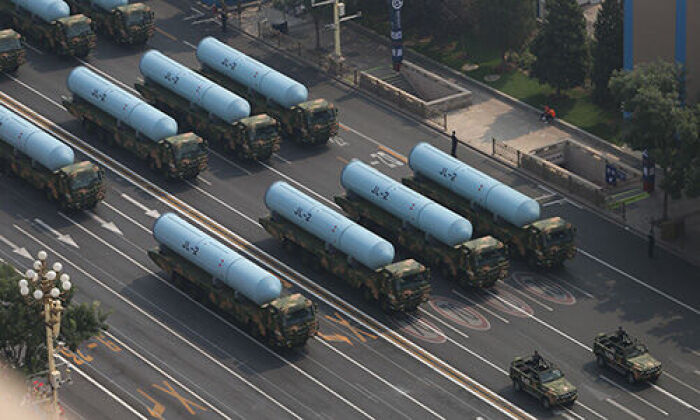News
Pentagon Predicts Chinese Nuclear Arsenal Could Quintuple in Size By 2035: Hypersonics Provide Strong Edge

A Pentagon estimate publisher on November 29 has projected that the Chinese People’s Liberation Army’s arsenal of nuclear weapons will reach 1500 warheads by 2035, up from a current estimate of around 350 warheads. A “dramatically accelerated pace” of nuclear development was predicted, although still leaving the country short of the U.S. and Russian arsenals of approximately 3700 and 4500 warheads each. An American defence official, speaking anonymously, elaborated: “what we’re looking at here, it raises some questions, I think, about their intent… They have not formally changed their policy or their strategy, but they’ve got a program underway that’s going to give them you a set of capabilities that would potentially enable them to consider different policy or strategy choices, beyond the ones that have been open to them in the past.” Reports in 2021 projected China would have 700 deliverable warheads by 2027 and 1,000 by 2030, with the new 1500 figure representing an extension of the previous forecast rather than a revision. The possibility has been raised that an expansion of the Chinese arsenal could spur the U.S. to enlarge its own in order to retain its advantage.
Speaking anonymously, the defence official added regarding improvements to the Chinese nuclear arsenal: “They’re doing things now that exceed really their previous attempts, both in terms of the scale, the numbers, and also the complexity and technological sophistication of the capabilities,” referring to a “rapid buildup that is kind of too substantial to keep under wraps.” Qualitative improvements to delivery capabilities have been comprehensive across the arsenal, ranging from the H-20 intercontinental range stealth bomber program, to induction of the new DF-41 intercontinental range ballistic missile and its submarine launched counterpart the JL-3 into service. The far greater costs faced by the United States in updating its arsenal, by contrast, have meant that it currently fields by far the oldest arsenal of ICBMs in the world with the possibility of retiring its half century old Minuteman 3 missiles without replacement being raised due to the unaffordability of a new program. China overtook the United States in 2020 in spending on defence acquisitions, and has consistently proven capable of inducting new weapons systems into service at a small fraction of the cost in part due to its much larger industrial base.

Of particular concern to the U.S. has been the development of intercontinental range hypersonic glide vehicles, a field where China is very comfortably ahead of the Western world, with a major test test in July 2021 seeing the vehicle fly for 40,000 kilometres for over 100 minutes – several times the distance between China and the United States. This was sufficient to facilitate strikes on the U.S. mainland from any direction, with U.S. Strategic Command chief Admiral Charles Richard describing it as “the greatest distance and longest flight time of any land attack weapon system of any nation to date.” Speaking in April 2022, Richard highlighted that the test heralded a major breakthrough in the advancement of Chinese nuclear capabilities. Investment in nuclear capabilities comes as China has increasingly come to be seen as the primary target of the U.S. Military, which began in the early 2010s due to the Barak Obama administration’s Pivot to Asia initiative and accelerated near the end of the decade under the Trump administration. China maintains a no first use policy for its nuclear arsenal alongside India, meaning it will not use nuclear weapons unless first targeted by an adversary’s own nuclear arsenal.












